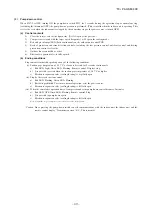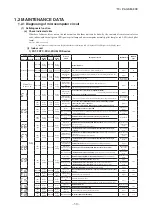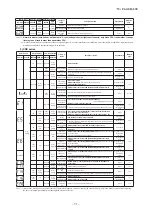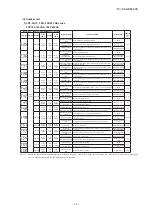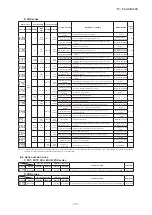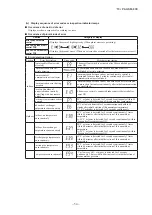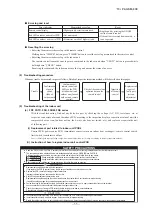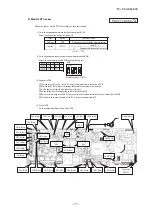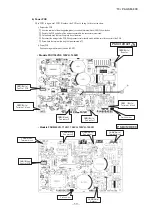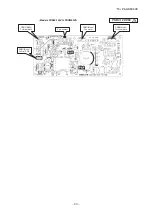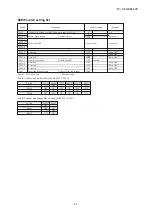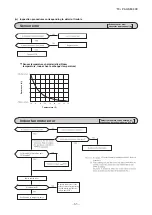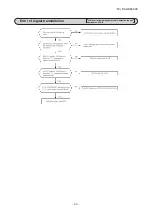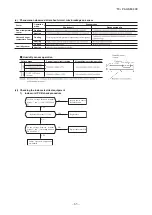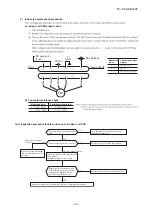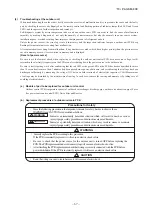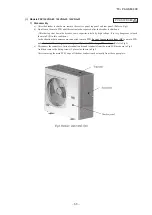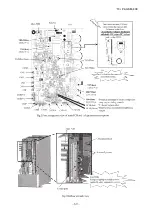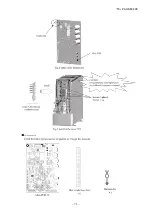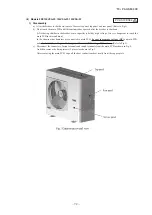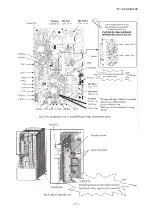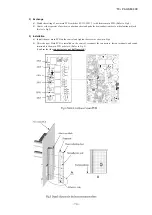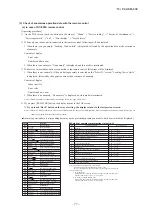
'19 • PAC-SM-309
-
62
-
(
i
)
ࠉ
Cautions
1) If you are disassembling and checking an air- conditioner, be sure to turn off the power before beginning.
When working on indoor units, let the unit sit for about 1 minute after turning off the power before you
2) When taking out printed circuit boards, be sure to do so without exerting force on the circuit boards or
package components.
3) When disconnecting and connecting connectors, take hold of the connector housing and do not pull on
(
ii
)
ࠉ
Items to check before troubleshooting
1) Is the air-conditioner running? Is it displaying any self-diagnosis information?
2) Is a power source with the correct voltage connected?
3) Are the control lines connecting the indoor and outdoor units wired correctly and connected securely?
4) Is the outdoor unit,s service valve open?
(
iii
)
ࠉ
Troubleshooting procedure (If the air-conditioner does not run at all)
If the air-conditioner does not run at all, diagnose the trouble using the following troubleshooting procedure.
Important
When all the following conditions are satisfied, we say that the air-conditioner will not run at all.
1) The RUN light does not light up.
2) The flaps do not open.
3) The indoor unit fan motors do not run.
4) The self-diagnosis display does not function.
begin work.
the lead wires.
(a) Cautions
1) If you are disassembling and checking an air conditioner, be sure to turn off the power before beginning.
YES
YES
NO
NO
NO
YES
Troubleshooting procedure (If the air-conditioner does not run at all)
Is the correct voltage
connected for the power
source?
With the power off, do
the flaps open manually,
then close again when
the power is turned on?
Replace the indoor printed
circuit board and perform an
operation check.
Make sure the correct volt-
age is connected, then per-
form an operation check.
Is the current fuse on the in-
door unit,s board broken?
Proceed to the indoor printed
circuit board check.
If the package components
are not damaged, replace
the fuse and perform an op-
eration check again.
* If the voltage is correct, it will be
within the following voltage range.
AC198 - 264V
When working on indoor units, let the unit sit for about 1 minute after turning off the power before you begin work.
2) When taking out printed circuit boards, be sure to do so without exerting force on the circuit boards or package components.
3) When disconnecting and connecting connectors, take hold of the connector housing and do not pull on the lead wires.
(b) Items to check before troubleshooting
1) Is the air conditioner running? Is it displaying any self-diagnosis information?
2) Is a power supply with the correct voltage connected?
3) Are the control lines connecting the indoor and outdoor units wired correctly and connected securely?
4) Is the outdoor unitÕs service valve open?
(c) Troubleshooting procedure (If the air conditioner does not run at all)
If the air conditioner does not run at all, diagnose the trouble using the following troubleshooting procedure.
Important
When all the following conditions are met, we say that the air conditioner will not run at all.
1) The RUN light does not light up.
2) The flaps do not open.
3) The indoor unit fan motors do not run.
4) The self-diagnosis display does not function.
(b) SRK series
Summary of Contents for FDC100VNA-W
Page 70: ... 19 PAC SM 309 69 LED2 Red LED1 Green ...
Page 72: ... 19 PAC SM 309 71 ...
Page 74: ... 19 PAC SM 309 73 LED2 Red LED1 Green ...
Page 76: ... 19 PAC SM 309 75 ...
Page 183: ... 19 PAC SM 309 182 1 e SRK series PHA012D402 ...
Page 184: ... 19 PAC SM 309 183 Screw ...
Page 185: ... 19 PAC SM 309 184 3 PHA012D402 ...
Page 186: ... 19 PAC SM 309 185 4 PHA012D402 ...


